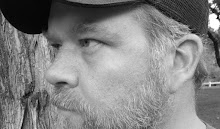
Color can be a great tool in costuming! What do you think when you see a man dressed all in olive green? Military, right? What about solid black? Solid black with lots of safety pins and zippers? Solid black with a ski mask and black leather gloves? You get the idea.
By using color we can say a lot about a character that will be noticed right away! Ever see one of those black and white photos with one or two elements toned bright red? A character in contrasting colors will stand out. Dress a group of actors alike, identical or just similar, and suddenly they belong together. Put everyone in rags and one man in a tuxedo and everyone wants to know why. By using grouping and contrasting in your costume scheme you may find that some pieces you thought were interesting but unusable suddenly become usable.
When my company Family Theatre Warehouse produced Seussical, the Dr. Seuss musical, we looked at images from several professional and regional productions. Most of them showed the Whos either dressed all in bright colors (far too busy) or one solid color (such as yellow) to set them apart. We had already decided to use Seussian art work for our backdrop in bright colors, and since the script calls for no animal costumes, (so our animals were brightly dressed in more or less human clothes), we needed another way to set the tiny (in actuality full size actors) whos apart.
We went back to our best source, the work of Dr. Seuss himself, and came away with a solution. Since having all of one color of costume for such a large group would be expensive and impractical we decided to use Seuss’s own color scheme, black and white! Since all of our other characters were dressed in bright solids we now had a way to put whos onstage with others without confusion. The audience could instantly identify who was whos!
The image above features our youngest performers (junior company 4-7 yrs) in one of their numbers from this very fun production!
By using color we can say a lot about a character that will be noticed right away! Ever see one of those black and white photos with one or two elements toned bright red? A character in contrasting colors will stand out. Dress a group of actors alike, identical or just similar, and suddenly they belong together. Put everyone in rags and one man in a tuxedo and everyone wants to know why. By using grouping and contrasting in your costume scheme you may find that some pieces you thought were interesting but unusable suddenly become usable.
When my company Family Theatre Warehouse produced Seussical, the Dr. Seuss musical, we looked at images from several professional and regional productions. Most of them showed the Whos either dressed all in bright colors (far too busy) or one solid color (such as yellow) to set them apart. We had already decided to use Seussian art work for our backdrop in bright colors, and since the script calls for no animal costumes, (so our animals were brightly dressed in more or less human clothes), we needed another way to set the tiny (in actuality full size actors) whos apart.
We went back to our best source, the work of Dr. Seuss himself, and came away with a solution. Since having all of one color of costume for such a large group would be expensive and impractical we decided to use Seuss’s own color scheme, black and white! Since all of our other characters were dressed in bright solids we now had a way to put whos onstage with others without confusion. The audience could instantly identify who was whos!
The image above features our youngest performers (junior company 4-7 yrs) in one of their numbers from this very fun production!












